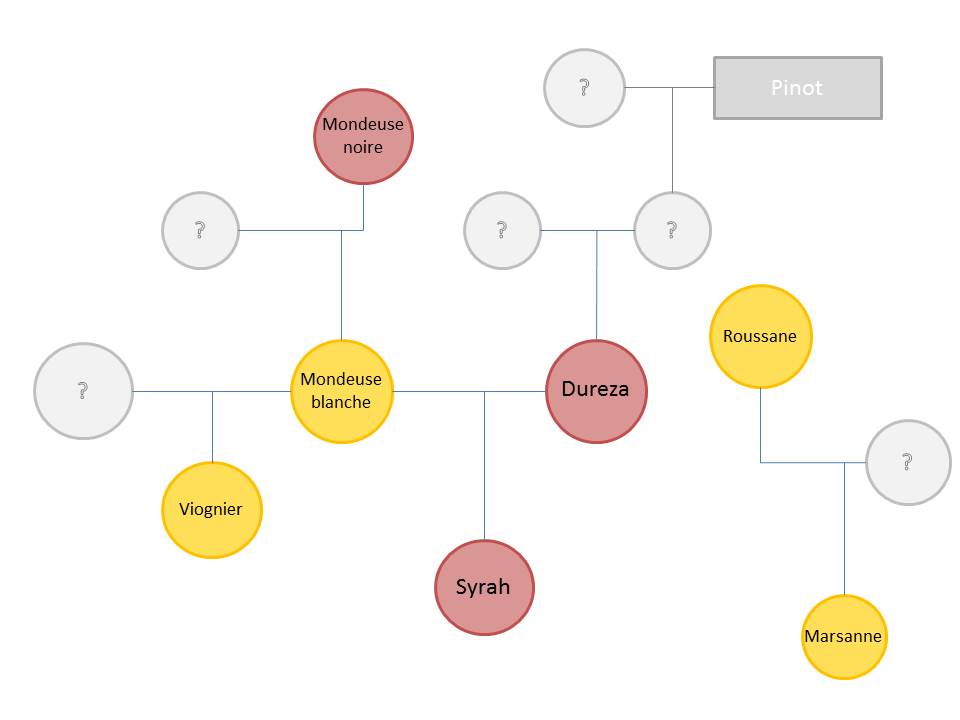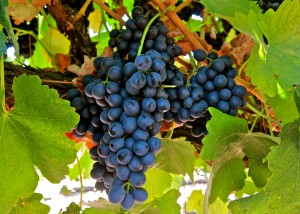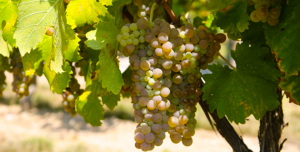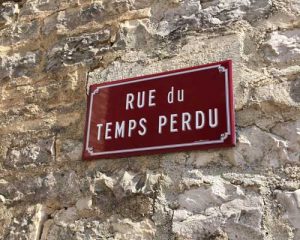This week we focus on the genealogy and history of the grape varieties of the Northern Rhône. Syrah, Marsanne, Roussanne and Viognier are the only four grape varieties allowed from Tain l’Hermitage to the North end of the Valley: Côte Rôtie, Château Grillet, Condrieu, Saint-Joseph, Crozes-Hermitage, Hermitage, Cornas and Saint-Péray (from North to South).
The family of Serine
The four varieties named above are all part of the same family called Serine. In addition to Syrah, Marsanne, Roussanne and Viognier, this family also includes Brun Argenté, Chatus, Chichaud, Douche Noire, Etraire de l’Aduï, Mondeuse Noire, Muscardin, Persan, Pougnet and Roussette d’Ayze.
 As you can see from the diagram, the genealogy of the Serine family is still quite unclear. Many varieties are unknown and their relationships are uncertain. The family tree above is merely theoretical – the most likely scenario, rather than an absolute conviction (according to J. Robinson, J. Harding, J. Vouillamoz).
As you can see from the diagram, the genealogy of the Serine family is still quite unclear. Many varieties are unknown and their relationships are uncertain. The family tree above is merely theoretical – the most likely scenario, rather than an absolute conviction (according to J. Robinson, J. Harding, J. Vouillamoz).
We do, however know with certainty the parents of Syrah, and we also know that Viognier comes from Mondeuse Blanche. Certainly, Marsanne and Roussanne have a ‘mother-daughter’ relationship, but it isn’t clear which of the two created the other. The results of DNA analysis can indicate their genealogic proximity but can’t give any information about order of family tie.
Syrah
 History: Syrahis probably one ofthe most famousgrape varietiesaround the world. A lot has been writtenonthe possibleheritageof its nameand its origins.Some attributethe nameSyrahtothe Greek island ofSyros,but no trace of Syrah was ever found. Others think thatthe grape variety, as its name seems to indicate,comes fromSyria,orAlbania, Persia or Sicily.
History: Syrahis probably one ofthe most famousgrape varietiesaround the world. A lot has been writtenonthe possibleheritageof its nameand its origins.Some attributethe nameSyrahtothe Greek island ofSyros,but no trace of Syrah was ever found. Others think thatthe grape variety, as its name seems to indicate,comes fromSyria,orAlbania, Persia or Sicily.
According to Levadoux and André (1964), the name Syrah comes from the Latin ‘Serus’, meaning “too late”, indicating the late ripening nature of the grape. Syrah is a descendant of Mondeuse Blanche, the Savoyard grape, and Dureza, a native of Ardèche, and was born somewhere between the two, to finally establish itself in Ardèche, as well as on the other side of the Rhône in Drôme.
Geography: Syrah is planted in the Rhône Valley (especially the north), South Africa, Australia, United States (California), Argentina, Chile, Spain, Italy and Switzerland.
Aromas: The Syrah wines of the northern Rhône Valley are distinguished by their power and aromas of ripe red and black fruit, smoked bacon, violets, spices and peppery notes. It can produce a supple wine with fresh fruit that is pleasant to drink young, while these wines can also be deeper and more tannic, like those from the great appellations of Côte-Rôtie and Hermitage.
In the New World, the fruity aromas of Syrah are more strongly expressed, with red and black fruit jam for a full and warm palate, with fairly high alcohol levels. These wines are powerful and mature, and often easy drinking, pleasant wines in their youth.
Marsanne and Roussanne
 History: We group these two varieties together because they are often blended and are very similar. As mentioned above, we know relatively little about the origin of these varieties, except that they both come from the northern Rhône Valley, probably somewhere between Lyon and Valence. Roussanne is the most “noble” of the two in terms of wine quality, but it is more difficult to produce. Marsanne is rarely vinified on its own, but brings a very interesting aromatic component when blended with Roussanne.
History: We group these two varieties together because they are often blended and are very similar. As mentioned above, we know relatively little about the origin of these varieties, except that they both come from the northern Rhône Valley, probably somewhere between Lyon and Valence. Roussanne is the most “noble” of the two in terms of wine quality, but it is more difficult to produce. Marsanne is rarely vinified on its own, but brings a very interesting aromatic component when blended with Roussanne.
Geography: These varieties are essentially cultivated in the northern Rhône Valley, but also in Australia, Spain, the USA, Switzerland and Italy. Roussanne, the most popular of the two, tends to be exported and established more widely in the New World. It is also the only grape allowed in the appellation of Chignin-Bergeron in Savoie (where it is called Bergeron).
Aromas: Dry white wines made from Marsanne and Roussanne are golden, with delicate aromas, often complex in the case of Hermitage, with a very broad range of both floral (white flowers, acacia) and fruity (peach, apricot, ripe apple) flavours, while there’s also hints of honey and spices. These are fine and distinguished wines, remarkable for their fleshy appearance and powerful aromas.
Viognier
History: Viognieris the emblematicgrape ofCondrieu. It is also growninCôte Rôtie,where it can beblendedup to 20% withred wine, as well asin a tinyappellation in the middleofCôte Rôtie – Château Grillet – whose size isinversely proportional to itsreputation.
 As shown above, it is very likely that Viognier is a cousin of Syrah. Other scenarios suggest it is its “grandfather”. Either way, these two varieties are very close and Viognier naturally falls within the Serine family. Legend has it that Viognier comes from Dalmatia and that Emperor Probus brought it from Croatia. It could therefore be a descendant of the local grape variety, Vugava Bijela. However, recent DNA analyses put an end to this theory, since the two varieties have no genetic similarity (source: Vouillamoz).
As shown above, it is very likely that Viognier is a cousin of Syrah. Other scenarios suggest it is its “grandfather”. Either way, these two varieties are very close and Viognier naturally falls within the Serine family. Legend has it that Viognier comes from Dalmatia and that Emperor Probus brought it from Croatia. It could therefore be a descendant of the local grape variety, Vugava Bijela. However, recent DNA analyses put an end to this theory, since the two varieties have no genetic similarity (source: Vouillamoz).
Geography: This variety is characteristic of the Condrieu appellation and northern Rhône Valley. Its low yields nearly led to its disappearance, but it is getting more and more popular in the New World. It is particularly appreciated in California, while it is also grown in South Africa, Australia, Argentina, Chile, Italy, Bulgaria and Switzerland.
Aromas: Viognier is relatively easy to recognize in a blind tasting. Firstly, because it is rarely blended. And secondly, these wines have strong personalities and re characterized by exuberant aromas of white flowers, violets, apricots, peaches, honey, orange blossoms and spices. On the palate, the wine is powerful and very persistent, with a full body that affords it great amplitude.
So, here we are at the end of Episode 4 about grapes of the northern Rhône Valley. Keep an eye out for more on the grape varieties of the Rhône Valley, particularly a few of the famous 13 varieties of Châteauneuf-du-Pape.



